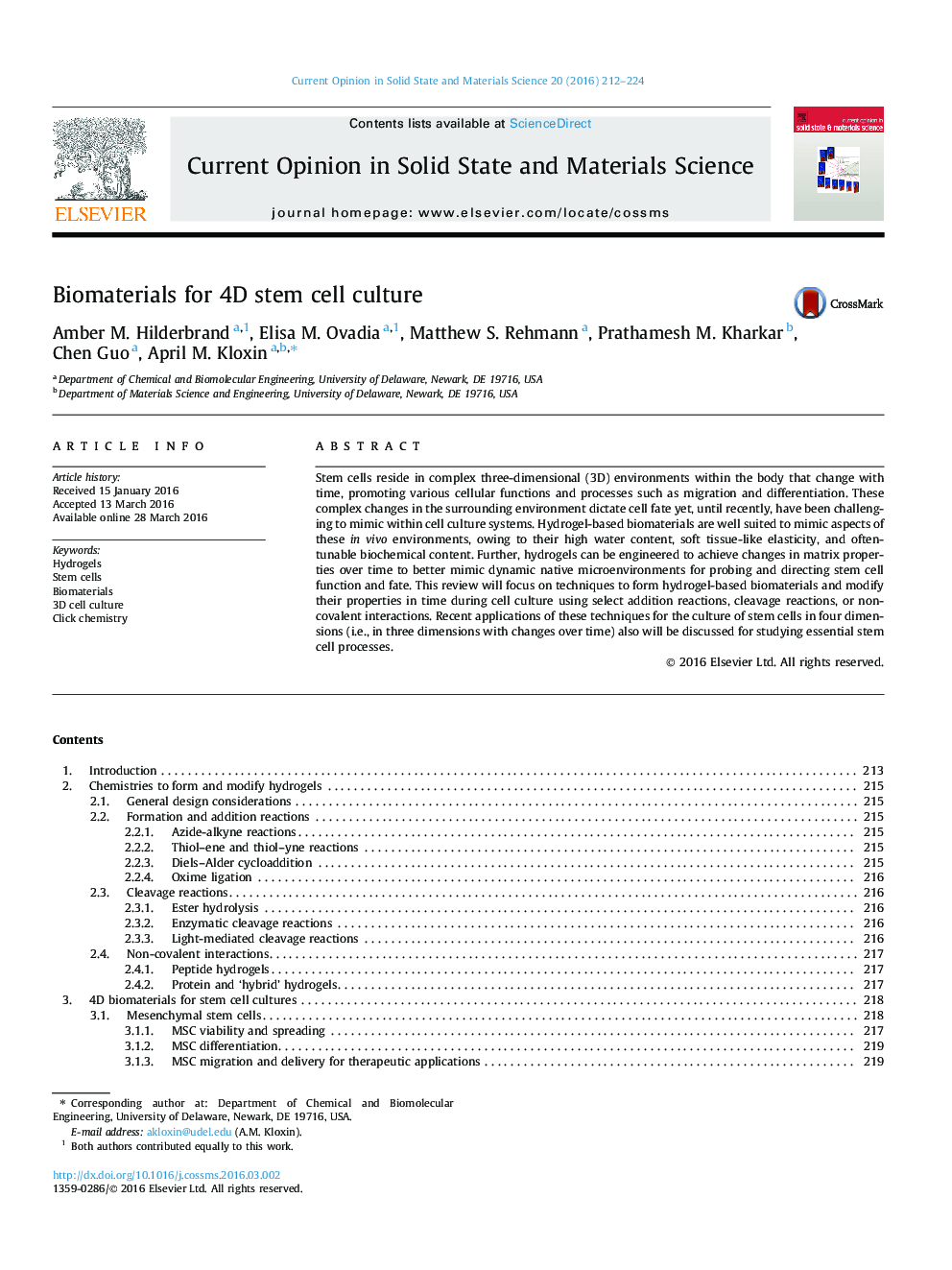| Article ID | Journal | Published Year | Pages | File Type |
|---|---|---|---|---|
| 5451512 | Current Opinion in Solid State and Materials Science | 2016 | 13 Pages |
Abstract
Stem cells reside in complex three-dimensional (3D) environments within the body that change with time, promoting various cellular functions and processes such as migration and differentiation. These complex changes in the surrounding environment dictate cell fate yet, until recently, have been challenging to mimic within cell culture systems. Hydrogel-based biomaterials are well suited to mimic aspects of these in vivo environments, owing to their high water content, soft tissue-like elasticity, and often-tunable biochemical content. Further, hydrogels can be engineered to achieve changes in matrix properties over time to better mimic dynamic native microenvironments for probing and directing stem cell function and fate. This review will focus on techniques to form hydrogel-based biomaterials and modify their properties in time during cell culture using select addition reactions, cleavage reactions, or non-covalent interactions. Recent applications of these techniques for the culture of stem cells in four dimensions (i.e., in three dimensions with changes over time) also will be discussed for studying essential stem cell processes.
Related Topics
Physical Sciences and Engineering
Materials Science
Materials Chemistry
Authors
Amber M. Hilderbrand, Elisa M. Ovadia, Matthew S. Rehmann, Prathamesh M. Kharkar, Chen Guo, April M. Kloxin,
